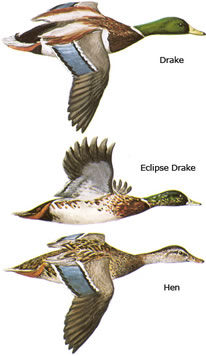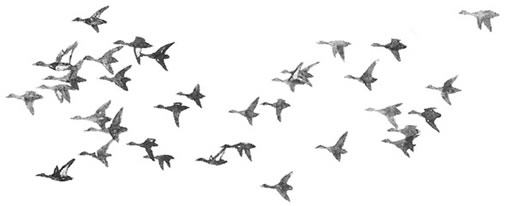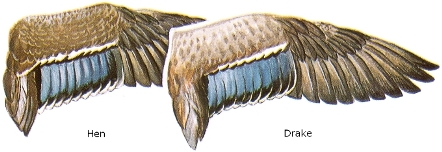Wildlife - Species

Species Specific Regulations
Mallard
Licenses: Hunting License required. Migratory Bird Hunting and Conservation Stamp (Federal Duck Stamp) that is validated by the hunter signing the stamp in ink across the face of the stamp
Limits: Please see Migratory Bird Regulations for any game zones restrictions or Limitations.
Mallard (Anas platyrhynchos)

Description
Mallards are the most familiar and widespread duck species. The males have a conspicuous green head which has earned themselves the nickname of "greenhead."
Average Size
Mallards have an average length of 24 inches and an average weight of 2 3/4 pounds.
Range
The mallard is our most common duck, found in all flyways. The main wintering area is the lower Mississippi basin and along the gulf coast, but many stay as far north as open waters permit. In South Carolina, mallards are common winter residents.
Preferred Habitat
Mallards are found in a broad range of habitats and can be found in almost any wetland habitat. They frequent everything from marshes, beaver ponds, lakes and reservoirs to city parks, farm ponds, and roadside ditches.
Typical Flock Pattern

Wings

Food Habits
Mallards are opportunistic omnivores, feeding on insects, aquatic invertebrates, snails, seeds, aquatic vegetation, and crops.
Reproduction
Mallards are one of the first Anas ducks to form pair bonds, which occurs from September to November. Female mallards build the nest on dry land close to water. The hen scrapes a nest in the ground and pulls nearby vegetation to the nest to use as a lining. Once the nest is complete she lays 1-13 creamy to grayish eggs.
Sound
Drakes voice is a low-pitched kwek-kwek, and hens have a loud quack.
Research
Citations, Publications and Literature
U.S. Fish & Wildlife Service, Federal Duck Stamp Office Presents: North American Waterfowl (Adobe PDF file)
Drilling, Nancy, Rodger Titman and Frank Mckinney. 2002. Mallard (Anas platyrhynchos), The Birds of North America Online (A. Poole, Ed.). Ithaca: Cornell Lab of Ornithology; Retrieved from the Birds of North America Online